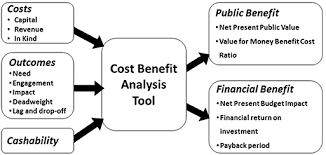what cost-benefit techniques are used by providers of healthcare services

Healthcare what cost-benefit techniques are used by providers of healthcare services is a field that is constantly evolving, as new technology and treatments are introduced. In order to stay up-to-date with the latest trends, healthcare providers must use cost-benefit techniques. What do we mean by cost-benefit techniques? Simply put, it’s a way of calculating the costs and benefits of different treatments in order to make an informed decision. This information can then be used to optimize patient care and save taxpayer money. In this blog post, we will explore what cost-benefit techniques are used by healthcare providers and how you can use them in your own life. From planning for retirement to making sound health decisions, read on to learn more about how these techniques can help you live a healthier life.
What is a cost-benefit technique?
Cost-benefit analysis (CBA) is a technique used by providers of healthcare services to assess the value of potential health interventions. CBA uses quantitative information, such as costs and outcomes, to identify which interventions are most likely to provide the greatest net benefit for society.
CBA can help providers make informed decisions about which health interventions to pursue. For example, if a medical intervention has a high upfront cost but potentially low long-term costs, it may be worth pursuing. Conversely, if an intervention has a high upfront cost but high long-term costs, it may not be worth pursuing.
CBA can also help providers compare the benefits and costs of different health interventions. For example, if one medical intervention has lower short-term costs but higher long-term costs than another intervention, it may be preferable to choose the latter over the former.
CBA can be used in a variety of settings, such as healthcare systems and clinical trials. Healthcare providers can use CBA to improve patient outcomes and reduce healthcare costs overall.
What are the different cost-benefit techniques?
There are a variety of cost-benefit techniques that providers of healthcare services can use in order to make informed decisions about the best course of action for patients. These techniques can range from simple calculations to more complex models, but all aim to provide clinicians with information that will help them choose the treatment option that is most likely to be beneficial for their patients.
One common type of cost-benefit calculation is the discounted cash flow (DCF) model. This approach uses data on future costs and revenues associated with a particular treatment option to assess its net present value (NPV). By comparing this figure to the NPV of available alternatives, providers can determine which option offers the greatest potential savings over the long term.
Other common cost-benefit methods include risk assessment and decision analysis. With risk assessment, providers evaluate the likelihood that a particular treatment will result in adverse effects for patients and make recommendations accordingly. Decision analysis employs similar principles to help clinicians identify optimal decisions based on available information.
While these techniques are helpful in making decisions about healthcare options, they should not be considered infallible. Every patient is unique, and there are always several factors that must be taken into account when making an informed decision.
How are cost-benefit techniques used in healthcare services?
Cost-benefit techniques are often used in healthcare services in order to determine the best course of action for a patient. In general, cost-benefit analysis involves separating out the costs incurred by providing a service (the direct costs) from the benefits received by the patient (the indirect costs). The indirect costs are then compared to the benefits received by patients to determine whether providing the service is worth it.
There are a number of different factors that can be taken into account when performing cost-benefit analysis, including:
•The financial resources that are available to provide the service
•The time and resources that will be required to provide the service
•The effectiveness of other services that may be available to patients
•The potential health risks associated with providing the service
•Any ethical considerations involved in providing the service
Conclusion
Providers of healthcare services use a variety of cost-benefit techniques to make informed decisions about which treatments and therapies to provide. Some of these techniques include cost-effectiveness analysis, clinical decision support systems, patient value assessment, and cost benefit ratio analyses. Healthcare providers use these techniques to make decisions about the best way to provide care for their patients.




